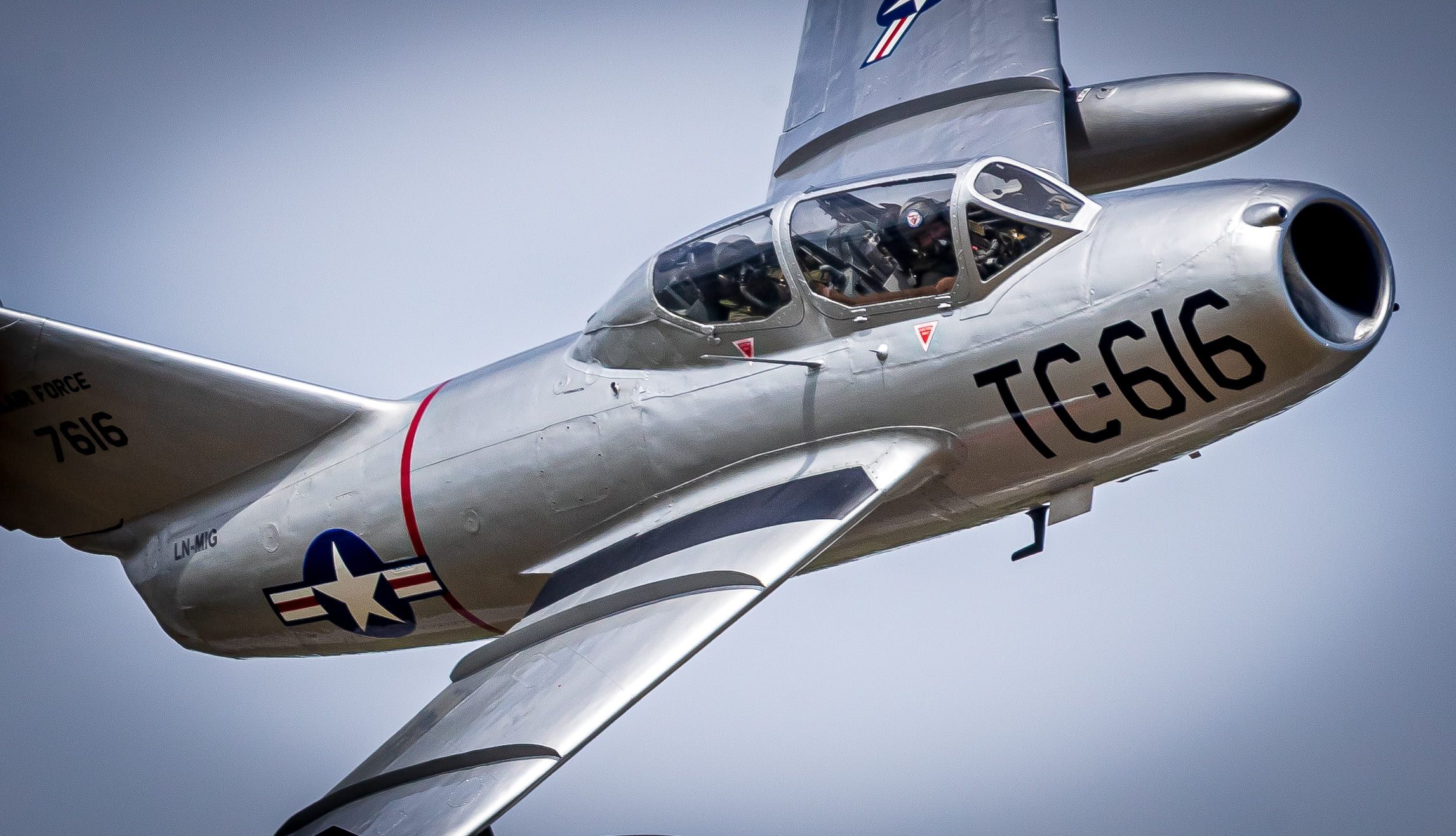The MiG-15, a Soviet jet fighter aircraft, stands as one of the most influential designs in the history of military aviation. With its impressive specifications and remarkable performance, it played a pivotal role in redefining aerial combat during the early Cold War era.

Design and Dimensions
The MiG-15’s design reflects both functionality and aerodynamic efficiency. The aircraft measures approximately 10 meters in length, with a wingspan of 10 meters, and stands 3.65 meters high. These dimensions contribute to its compact yet formidable presence, allowing for superior maneuverability and agility in combat situations.
The aircraft’s sleek, swept-wing design was revolutionary at the time, significantly enhancing its speed and performance. The wings, angled back at a 35-degree sweep, reduced drag and allowed the MiG-15 to achieve higher speeds compared to its straight-winged predecessors. This design also provided improved stability and control at high altitudes, making it a versatile and effective fighter.

Power and Performance
At the heart of the MiG-15 is the Klimov VK-1 jet engine, a powerful propulsion unit that gave the aircraft its exceptional capabilities. The VK-1, a development of the British Rolls-Royce Nene engine, produced a thrust of around 26.5 kN, propelling the MiG-15 to a maximum speed of 298.6 meters per second (approximately 1,074 km/h or 667 mph).
This engine also contributed to the aircraft’s impressive range of 1,198 kilometers (about 745 miles), allowing it to conduct extended missions without the need for frequent refueling. The combination of speed, range, and agility made the MiG-15 a formidable adversary in dogfights and an effective interceptor.

Armament and Combat Capabilities
The MiG-15 was not only fast and agile but also heavily armed. It typically carried two 23mm Nudelman-Rikhter NR-23 cannons and one 37mm Nudelman N-37 cannon, providing substantial firepower capable of inflicting significant damage on enemy aircraft. This armament made the MiG-15 a lethal opponent in aerial engagements, particularly in close-range dogfights.
The aircraft’s combat capabilities were demonstrated during the Korean War, where it faced off against United Nations forces. The MiG-15 quickly gained a reputation for its effectiveness in air-to-air combat, often outperforming its Western counterparts, such as the F-86 Sabre, in terms of climb rate and armament. The introduction of the MiG-15 into the Korean theater marked a turning point in the conflict, as it challenged the air superiority previously held by the UN forces.

Historical Impact and Legacy
The MiG-15’s impact extended beyond its combat performance. It served as a symbol of Soviet technological advancement and military prowess during the early Cold War period. The aircraft’s success in combat prompted the United States and its allies to accelerate the development of their own jet fighters, spurring a technological arms race that defined much of the Cold War era.
Moreover, the MiG-15 played a crucial role in the training and development of Soviet and Eastern Bloc pilots. Its relatively simple design and robust construction made it an ideal platform for pilot training, and many of the pilots who flew the MiG-15 would go on to become key figures in their respective air forces.
The MiG-15’s legacy is also evident in its influence on subsequent aircraft designs. Its swept-wing configuration and other design innovations were incorporated into later Soviet fighters, such as the MiG-17 and MiG-19, as well as in Western aircraft designs. The lessons learned from the MiG-15’s operational use helped shape the future of jet fighter development around the world.
Conclusion
In conclusion, the MiG-15 stands as a testament to the rapid advancements in military aviation during the mid-20th century. Its combination of speed, agility, firepower, and range made it a formidable opponent in the skies, and its influence on subsequent aircraft designs and military strategies is undeniable. The MiG-15 not only changed the course of aerial warfare but also left an enduring legacy that continues to be felt in the world of aviation today.
4o





